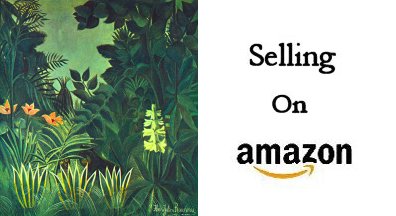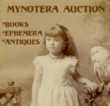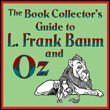|
|
|



|
|
by earthmom
#123, 23 June 2008
|
You're holding your first book in your hand, getting ready to list it for sale. Before you do anything else, you have to grade it. (If you've been selling on other venues or dealing with booksellers offline and are familiar with conventional terminology, you'll notice that the word "Fine" appears nowhere in the Amazon condition guidelines!)
The Amazon grading system is as follows: Used: New; Used: Like New; Used: Very Good; Used: Good; and Used: Acceptable. If a book
qualifies as collectible (see criteria below), there are additional grades under this umbrella: Collectible: Like New; Collectible:
Very Good; Collectible: Good; and Collectible: Acceptable. In addition to selecting one of these grades, there is a comment field
that should be used to provide condition details. It is ALWAYS better to grade a bit lower and let the customer be pleasantly
surprised that the condition is better than expected rather than grade higher and have them be disappointed once the book arrives.
Here are Amazon's Condition Guidelines criteria with my comments in parentheses:
o NEW: Just like it sounds. A brand-new, unused, unread copy in perfect condition.
(This is a debatable term and one that gets abused more than any other. "New" means that it does not contain highlights or other marks, or wear, and the book has not been opened. "New" actually means new: New books are equivalent in condition to books that have been removed from the boxes they were shipped in from the publisher and have no faults. If a book is still in its original shrink wrap, it can be graded as New as long as there is no visible damage. If you pick up a book that appears unread or otherwise looks new to you, it should pass the test recommended in the following article. If it doesn't, it should be dropped to the Like New grade. Also, "New" does not mean that you bought it from the local Barnes and Noble bookstore and didn't read it. An interesting exercise is to stroll through your local Barnes and Noble store and look at the books on their shelves. Many show evidence of wear. Books get opened, thumbed through; and some are taken to seats and read. Even if untouched, books may deform under their own weight, collect dust or fade as they sit on shelves. Once they are paid for and taken home, many are at best in Very Good condition.)
[EDITOR'S NOTE: See the following article for a recommended test for distinguishing new books from used books.]
o LIKE NEW: An apparently unread copy in perfect condition. Dust cover is intact; pages are clean and are not marred by notes or folds of any kind. Suitable for presenting as a gift.
("Suitable for presenting as a gift" is a good thing to keep in mind. Gift quality books should appear unused, as though a nice copy had been purchased from a new bookstore - unopened, unmarked, pages not turned, etc. No damage whatsoever.)
o VERY GOOD: A copy that has been read, but remains in excellent condition. Pages are intact and are not marred by notes or highlighting. The spine remains undamaged.
(This term also is regularly abused. Often a book will be listed as Very Good with a comment that the spine is creased. No. The spine should be not be damaged at all - no creases. An illustration of Very Good condition is a book that has been gently read and the front cover has lifted a little. Though not specified by Amazon, a neatly written ownership signature or stamp on the front pastedown or front free endpaper is acceptable as long as the book is otherwise clean and undamaged.)
|
|







|
|












|


